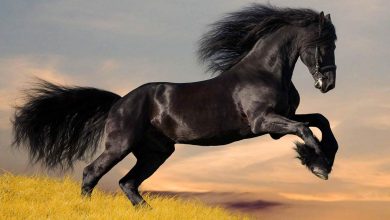Sand cat (Felis margarita) – the smallest wild cat
Not only the fennec – a small fox with unusually large ears – is a mammal born to live in deserts that are hostile for humans. Also a wild cat, which is of a size of a domestic cat, is perfectly adapted to it. Similarly to the above mentioned fennec, this cat may be proud of its impressive ears. However, because of the adorable appearance of the sand cat – because that’s the animal we are talking about – it is doomed to being pursued by people. But let’s not forget that it is a predator that has mastered living in the desert better than an average Homo sapiens. Get to know, the smallest, sweet wild cat, with an impressive ears.
Classification
- Class: Mammalia
- Order: Carnivora
- Family: Felidae
- Genus: Cat (Felis)
- Species: Sand cat
- Subspecies:
- Felis margarita margarita – occurs in Algeria, in the Aïr Mountains in Niger (southern Sahara), on the Sinai Peninsula and Arabian Peninsula
- Felis margarita harrisoni – occurs on the Arabian Peninsula
- Felis margarita scheffeli – lives in the Nushki desert in Pakistan
- Felis margarita thinobia – occurs in the Karakum desert (Turkestan), Kyzylkum desert in Uzbekistan, and in the Transcaspian area.

Habitats
The sand cat is a psammophile – an animal that lives in the sand. Therefore, it prefers very dry habitats, mostly sandy deserts (that is why it’s called the sand cat). Apart from deserts, it also occurs in grasslands with little vegetation, and in rocky valleys.
The species lives in extreme weather conditions, where temperature reaches up to +52 degrees Celsius (126 °F) at daytime, and at night drops to about -5 degrees Celsius (23 °F).
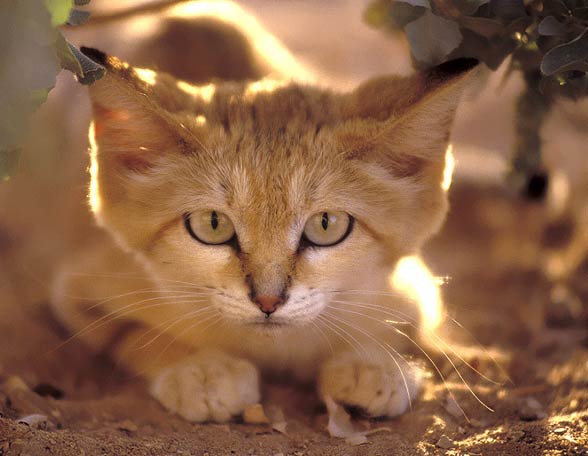
Characteristics
Appearance
The size of the sand cat is similar to the size of the domestic cat. Males weigh 2.1-3.4 kg, while females 1.4-3.1 kg. The body length of both sexes ranges 39-52 cm (15 to 20 in).
The adorable, large and pointed pinna, slightly similar to those of the fennec (Vulpes zerda), are the most characteristic feature of the species. They are set low which makes the head look flattened. It seems that the ears protect themselves from sand in that way.
As it is easy to guess, hearing is the best sense of the sand cat, as well as smell. Thanks to large ears and developed hearing, the cat is able to hear its prey moving underground.
The body is covered with thick, relatively short fur, that effectively protects the animal from low temperatures at night. Fur coloration varies from light yellow to grey, there are also black or dark brown stripes on the tail and limbs. Near the inner corners of the eyes you can see dark red lines. The pupils are greenish yellow.
The chin and chest are always whitish. The foot pads are covered with dark fur between the toes in order to protect the paws from burns caused by walking on hot ground. Hairy paws make it difficult for scientists and seekers to follow these animals, because they leave no traces behind. Moreover, the hair enables the cat to move more safely on uncertain, sandy ground. The limbs of the sand cat are relatively short, and the tail is rather long. The claws on the forelimbs are short and very sharp, and these on the hinder limbs are small and blunt.

Diet
The sand cat feeds predominantly on small mammals, such as gerbils, hares and lemmings, but also birds, snakes and other reptiles. It can also catch insects or spiders.
The species is known for being dauntless in contact with snakes. It hunts venomous vipers that it attacks fearlessly all alone.
Generally speaking, the sand cat is an opportunistic predator that hunts everything that it can catch at a given moment. Food provides it also with a proper amount of water which is vital to survive, and very rare on sandy areas.

Behavior
Although the sand cat is not good at leaping or climbing, it is great at digging in the ground. Thanks to that skill, it can create shallow burrows in which it cools down during extremely hot days. It can also sleep on its back, outside the burrow, to let as much hotness escape from its body and hot shelter as it is possible. Burrows can be shared with other individuals, but one den can be occupied by only one cat.
The animal is usually nocturnal, except for the Pakistan subspecies, that is active at night in the summer, and in the winter it is active at dawn and dusk. The observers claim that when the cat meets people at night, it closes its eyes so that people can’t see them glow in the dark which could show the presence of the cat.
The sand cat makes vocalizations usually in the mating season. This way, mates can hear each other from far distances.
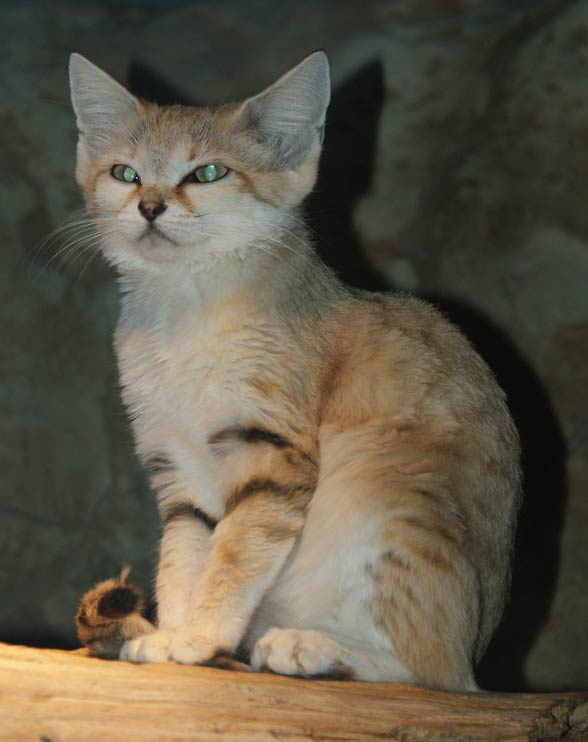
Reproduction
The sand cat is a typical loner during the whole year. However, its habits change when it’s time for mating.
It may seem that good hearing is an important element of mating, because it’s vital for the communication between mates. The rutting season (period of fertility of females) lasts 5-6 days. In this time, a female sand cat marks the territory with her scent to attract a male.
The sand cat can breed more often than once a year, and breeding seasons are dependent on the area a cat lives in. In Sahara, this season starts in January and ends in April. In Turkestan, its starts not earlier than in April. And in Pakistan, the breeding season is between September and October.
Pregnancy usually lasts 59-63 days, and after that, a female gives birth to 1-8 kittens (4-5 on average). They become sexually mature after 9-14 months, but they become independent from their mother when they’re 6-8 months old. It is suspected, that this quick process of becoming independent and sexually mature is the most advantageous solution in unfavorable environmental conditions.
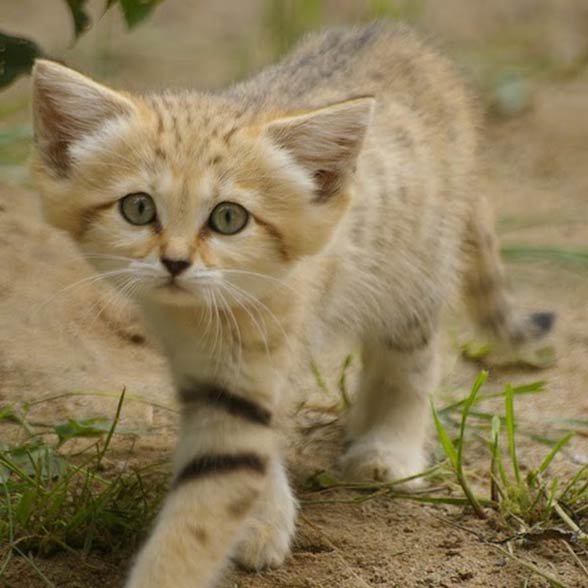
Detailed information / size
Sand cat (Felis margarita)
- Body length without the tail: 39-52 cm (15 to 20 in)
- Tail length: 23-31 cm (9 to 12 in)
- Weight: Males: 2.1-3.4 kg (4.6 – 7.5 lb), females: 1.4-3.1 kg (3.1 – 6.8 lb)
- Lifespan: to 13 years in captivity; it is unknown how long it lives in the wild.
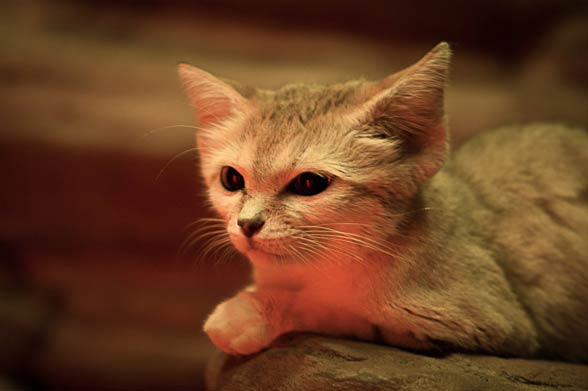
Sand cat – interesting facts
- The sand cat is the smallest wild cat.
- The sand cat’s bite force quotient is the highest among all cats (Felis).
- Snakes, owls and jackals are the major threat for the sand cat. Apart from these natural enemies, it is also threatened by humans, because they poison and poach the cats for the sake of trade in animals. Nevertheless, the sand cat is the least endangered felid in the world.
- Because of its secretive nature, the sand cat hasn’t been known well. Therefore, the estimated population value and range of distribution may be understated.
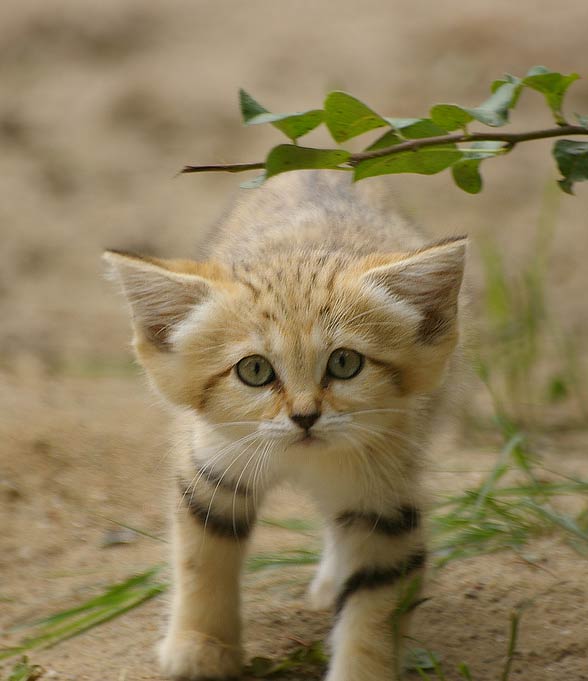
Recommended
- Barbary lion
- Siberian tiger
- Bengal tiger
- Sumatran tiger
- Indochinese tiger
- Malayan tiger
- Tigers
- White tigers
- Lions
- White lions
- Lion vs tiger
- Liger
- Pallas’s cat
- Animal fights
- American lion
- European cave lion
- Smilodon – Saber-toothed tiger
- Big cats
- Black panther
- Leopard
- Snow leopard
- African Lion
- Fastest animals
- Fastest birds















